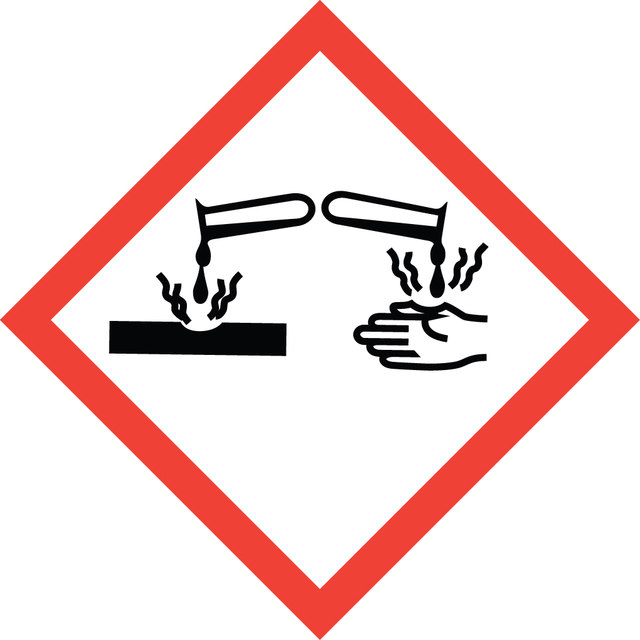1.06467
Sodium hydroxide
granulated EMPLURA®
Synonym(s):
‘Caustic soda’
About This Item
vapor density
>1 (vs air)
Quality Level
vapor pressure
<18 mmHg ( 20 °C)
3 mmHg ( 37 °C)
product line
EMPLURA®
Assay
≥99% NaOH basis (acidimetric)
form
granular
pH
>14 (20 °C, 100 g/L in H2O)
mp
318 °C (lit.)
solubility
1090 g/L
density
2.13 g/mL at 20 °C
anion traces
carbonate (as Na2CO3): ≤1%
chloride (Cl-): ≤0.2%
sulfate (SO42-): ≤0.05%
cation traces
Al: ≤0.002%
Fe: ≤0.002%
heavy metals (as Pb): ≤0.002%
storage temp.
2-30°C
SMILES string
[OH-].[Na+]
InChI
1S/Na.H2O/h;1H2/q+1;/p-1
InChI key
HEMHJVSKTPXQMS-UHFFFAOYSA-M
Application
- Silver Nanoparticles-Chitosan Nanocomposites: A Comparative Study Regarding Different Chemical Syntheses Procedures and Their Antibacterial Effect.: This study explores the synthesis of silver nanoparticles-chitosan nanocomposites using various chemical procedures, including the use of sodium hydroxide, to evaluate their antibacterial properties (Chicea et al., 2024).
- Using Sparfloxacin-Capped Gold Nanoparticles to Modify a Screen-Printed Carbon Electrode Sensor for Ethanol Determination.: This research demonstrates the modification of sensors using gold nanoparticles with sodium hydroxide, enhancing ethanol detection capabilities (Magesh et al., 2023).
- Sequence Mining Yields 18 Phloretin C-glycosyltransferases from Plants for the Efficient Biocatalytic Synthesis of Nothofagin and Phloretin-di-C-glycoside.: The study includes the use of sodium hydroxide in biocatalytic processes to synthesize glycosylated compounds efficiently (Putkaradze et al., 2023).
- Effect of Calcination Temperature and Time on the Synthesis of Iron Oxide Nanoparticles: Green vs. Chemical Method.: This paper investigates the synthesis of iron oxide nanoparticles using sodium hydroxide, comparing green and chemical methods for optimization (Abdullah et al., 2023).
- Improved Jellyfish Gelatin Quality through Ultrasound-Assisted Salt Removal and an Extraction Process.: Sodium hydroxide is utilized to enhance the extraction process of gelatin from jellyfish, improving its quality through ultrasound-assisted methods (Lueyot et al., 2022).
Analysis Note
Carbonate (as Na₂CO₃): ≤ 1.0 %
Identity: passes test
Chloride (Cl): ≤ 0.2 %
Sulfate (SO₄): ≤ 0.05 %
Heavy metals (as Pb): ≤ 0.002 %
Al (Aluminium): ≤ 0.002 %
Fe (Iron): ≤ 0.002 %
Legal Information
Still not finding the right product?
Explore all of our products under Sodium hydroxide
Signal Word
Danger
Hazard Statements
Precautionary Statements
Hazard Classifications
Eye Dam. 1 - Met. Corr. 1 - Skin Corr. 1A
Storage Class Code
8A - Combustible, corrosive hazardous materials
WGK
WGK 1
Flash Point(F)
Not applicable
Flash Point(C)
Not applicable
Certificates of Analysis (COA)
Search for Certificates of Analysis (COA) by entering the products Lot/Batch Number. Lot and Batch Numbers can be found on a product’s label following the words ‘Lot’ or ‘Batch’.
Already Own This Product?
Find documentation for the products that you have recently purchased in the Document Library.
